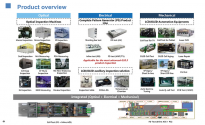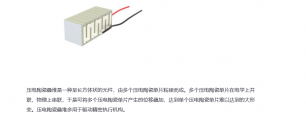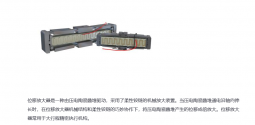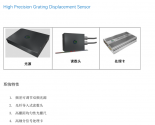You are using an out of date browser. It may not display this or other websites correctly.
You should upgrade or use an alternative browser.
You should upgrade or use an alternative browser.
Chinese semiconductor industry
- Thread starter Hendrik_2000
- Start date
- Status
- Not open for further replies.
Piezo ceramic stage
Interesting thing from NIO earnings call today about the Nvidia ban.
I took a look at what they are talking about. It's well known that NIO had been working with Baidu cloud for a data center solution using A100 chips. I've also posted a lot about Baidu's work with Kunlun-2 and their participation in BR100 project.
A couple of things from this. Baidu builds a lot of AI cloud for big customers. It can make the sales pitch in China as the only service provider that can offer self developed AI IaaS layer including the Kunlun chip, Paddle Paddle deep learning platform and wnexin big data model.
A lot of this was unveiled as part of their new "cloud intelligence 3.0" platform. here is the key
Again, Kunlun-3 to enter mass production in start of 2024. It is expected to be able to replace high end GPUs in China. They also discussed the Beige 2.0 AI computation platform which uses Kunlun chip and improved AI training efficiency by 2 times and reduced self driving mass production from months to weeks.
So I took a look at what they talked about with integrating with other platforms. Here it is. I would assume NIO will probably opt for this with A100 no longer being available. This seems readily available and has good performance (although not as good as BR100).
This is a project Baidu cloud had with Jiangsu bank. It used 2/4/8 K200 (kunlun2) GPUs, FT2500-64 Feting CPU (or S2500?), PaddlePaddle ARM framework and PaddlePadle deep learning platform. It uses the Ubuntu Kylin OS. So, everything being used in this AI accelerator platform is made in China. Entirely sanction free.
This is what I can find on FT S2500. I'd be curious what they can make with the SMIC n+1 process since this came out in a year or 2 ago with what I assume to be the best SMIC could produce back then?
S2500 uses 16nm process, 64 cores, 2.1 GHz.
It seems like this is entirely developed to be sanction free.
There you have it, NIO and other companies can still do their computation with domestic chips.The will have no impact on NIO's operations in the short term, and in terms of AI computing power, NIO's current resources are sufficient for self-driving algorithm training.
There are local companies in China with similar chips, and NIO will evaluate their solutions.
I took a look at what they are talking about. It's well known that NIO had been working with Baidu cloud for a data center solution using A100 chips. I've also posted a lot about Baidu's work with Kunlun-2 and their participation in BR100 project.
A couple of things from this. Baidu builds a lot of AI cloud for big customers. It can make the sales pitch in China as the only service provider that can offer self developed AI IaaS layer including the Kunlun chip, Paddle Paddle deep learning platform and wnexin big data model.
A lot of this was unveiled as part of their new "cloud intelligence 3.0" platform. here is the key
Nvidia is in huge trouble if Chinese domestic chips can reduce cost by 65%! I assume that Kunlun-3 will be higher end like BR100. Although, even the Kunlun-2 offers higher computation and low power consumption than the previous generation V100 from Nvidia. Nvidia doesn't have a market in China for AI accelerators if all they can export is V100.the chip has been able to replace foreign-made chips and reduce costs by as much as 65%. At present, Kunlun (3rd generation) is already under R&D and it is expected to be mass-produced in 2024. The chip will become a substitute product for domestic high-end demand.
Again, Kunlun-3 to enter mass production in start of 2024. It is expected to be able to replace high end GPUs in China. They also discussed the Beige 2.0 AI computation platform which uses Kunlun chip and improved AI training efficiency by 2 times and reduced self driving mass production from months to weeks.
So I took a look at what they talked about with integrating with other platforms. Here it is. I would assume NIO will probably opt for this with A100 no longer being available. This seems readily available and has good performance (although not as good as BR100).
This is a project Baidu cloud had with Jiangsu bank. It used 2/4/8 K200 (kunlun2) GPUs, FT2500-64 Feting CPU (or S2500?), PaddlePaddle ARM framework and PaddlePadle deep learning platform. It uses the Ubuntu Kylin OS. So, everything being used in this AI accelerator platform is made in China. Entirely sanction free.
This is what I can find on FT S2500. I'd be curious what they can make with the SMIC n+1 process since this came out in a year or 2 ago with what I assume to be the best SMIC could produce back then?
S2500 uses 16nm process, 64 cores, 2.1 GHz.
It seems like this is entirely developed to be sanction free.
You are probably right. I saw someone upthread that said Phytium will be making chips using SMIC N+1 process, so waiting to see what that looks like.16nm sounds like TSMC in China.
SMIC has no 16nm process going straight for 14nm.
Regardless, this is a system China can export to Russia data centers and rest of Asia.
I'm assuming the design would've been happening a while back (like 2020) when SMIC was testing in small batches. Now that SMIC seems to have started N+1 production, they must have received customer orders.It typically takes at least two years to switch a chip design to a new process and start fabrication.
And that is assuming you don't have issues.
I'm also curious if Kunlun-3 will be using SMIC process or TSMC process. They probably should do the former if they want to be safe.
Jingce Electronics has obtained relevant orders in the field of Micro LED and Micro OLED
Jiwei.com news (text / Ma Hui) an investor asked Jingce Electronics: "Your company's semi-annual report discloses that in the field of flat panel display detection in the main business, the signal detection system achieved a year-on-year increase of 69.93% in sales revenue, compared with other The product growth rate is obvious. Will the main downstream applications of the signal detection system mainly focus on the traditional LCD and OLED fields, or the emerging Micro LED and Micro OLED fields?"
In response to this problem, Jingce Electronics stated on the investor interaction platform on September 8 that the current revenue contribution of the company's signal detection system is mainly concentrated in the LCD and OLED fields. Get the relevant order. At this stage, the above-mentioned related product revenue accounts for a relatively small scale of the company's total revenue. In the future, the company will continue to increase research and development efforts in the field of new displays, further strengthen the cooperative relationship with leading strategic customers at home and abroad, and actively participate in the competition in this field.
Previously, Jingce Electronics responded to investors' questions about "What products does your company have in the VR and AR fields? What are the major downstream customers?" The company, as a leading display panel testing equipment manufacturer, will continue to increase The R&D investment in the new display field has been increased, and relevant testing and debugging equipment products have continued to develop. The layout of AR/VR/MR and other head-mounted display equipment supporting testing has been in-depth and has made great progress. Among them, Micro-OLED, optical display modules (Eyecup) and other supporting tests have received orders from internationally renowned leading customers. In addition, the Micro-LED supporting screen testing equipment project jointly developed by the company and the international head customer M is progressing smoothly, and the verification order from the customer has been obtained, which will lay a good foundation for the company to successfully obtain mass production orders in the AR field in the future.

- Status
- Not open for further replies.



